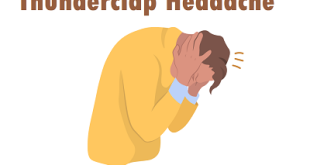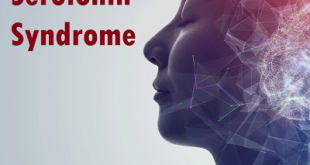Overview
Traumatic Brain Injury (TBI) is an alteration in brain function, or other evidence of brain pathology, caused by an external force. It occurs when an external force impacts the brain, and often is caused by a blow, bump, jolt or penetrating wound to the head. However, not all blows or jolts to the head cause traumatic brain injury, some just cause bony damage to the skull, without subsequent injury to the brain. Mild traumatic brain injury is now more commonly referred to as concussion.
Traumatic brain injury does not always result in obvious motor impairment. Other hidden symptoms related to cognition and behaviour can also occur with traumatic brain injury. The fact that the population living with traumatic brain injury are largely invisible and are not outspoken about their needs plus widespread misunderstanding of the impact of related conditions, has earned the traumatic brain injury the name the “silent epidemic”.
Various healthcare service-related factors can influence the impact of traumatic brain injury on individuals and society. These include implementation of algorithm-based best practices in emergency and intensive care medicine, implementation of a systematic approach to neurorehabilitation, improved access to related services and adequate related funding. Where these issues are not addressed, people living with a traumatic brain injury can be prevented from capitalising on the most valuable time for rehabilitative treatment which results in significantly increased care costs. Longer-term related unemployability and loss of income affect both traumatic brain injury survivors and family members providing care. These issues lead to an underestimated social cost of traumatic brain injury.
Types of traumatic brain injuries
- Concussion is a mild head injury that can cause a brief loss of consciousness and usually does not cause permanent brain injury.
- Contusion is a bruise to a specific area of the brain caused by an impact to the head; also called coup or contrecoup injuries. In coup injuries, the brain is injured directly under the area of impact, while in contrecoup injuries it is injured on the side opposite the impact.
- Diffuse axonal injury (DAI) is a shearing and stretching of the nerve cells at the cellular level. It occurs when the brain quickly moves back and forth inside the skull, tearing and damaging the nerve axons. Axons connect one nerve cell to another throughout the brain, like telephone wires. Widespread axonal injury disrupts the brain’s normal transmission of information and can result in substantial changes in a person’s wakefulness.
- Traumatic Subarachnoid Hemorrhage (tSAH) is bleeding into the space that surrounds the brain. This space is normally filled with cerebrospinal fluid (CSF), which acts as a floating cushion to protect the brain. Traumatic SAH occurs when small arteries tear during the initial injury. The blood spreads over the surface of the brain causing widespread effects.
- Hematoma is a blood clot that forms when a blood vessel ruptures. Blood that escapes the normal bloodstream starts to thicken and clot. Clotting is the body’s natural way to stop the bleeding. A hematoma may be small or it may grow large and compress the brain. Symptoms vary depending on the location of the clot. A clot that forms between the skull and the dura lining of the brain is called an epidural hematoma. A clot that forms between the brain and the dura is called a subdural hematoma. A clot that forms deep within the brain tissue itself is called an intracerebral hematoma. Over time the body reabsorbs the clot. Sometimes surgery is performed to remove large clots.
Although described as individual injuries, a person who has suffered a TBI is more likely to have a combination of injuries, each of which may have a different level of severity. This makes answering questions like “what part of the brain is hurt?” difficult, as more than one area is usually involved.
Secondary brain injury occurs as a result of the body’s inflammatory response to the primary injury. Extra fluid and nutrients accumulate in an attempt to heal the injury. In other areas of the body, this is a good and expected result that helps the body heal. However, brain inflammation can be dangerous because the rigid skull limits the space available for the extra fluid and nutrients. Brain swelling increases pressure within the head, which causes injury to parts of the brain that were not initially injured. The swelling happens gradually and can occur up to 5 days after the injury.
Epidemiology
Traumatic brain injuries are more common in young patients, and men account for the majority (75%) of cases. Although sport is a common cause of relatively mild repeated head injury potentially eventually leading to chronic traumatic encephalopathy, more severe injuries are most often due to motor vehicle accidents and assault.
Pathophysiology
Brain function may be immediately impaired by direct damage (eg, crush, laceration) of brain tissue. Further damage may occur shortly thereafter from the cascade of events triggered by the initial injury.
Traumatic brain injury (TBI) of any sort can cause cerebral edema and decrease brain blood flow. The cranial vault is fixed in size (constrained by the skull) and filled by noncompressible CSF and minimally compressible brain tissue; consequently, any swelling from edema or an intracranial hematoma has nowhere to expand and thus increases intracranial pressure (ICP). Cerebral blood flow is proportional to the cerebral perfusion pressure (CPP), which is the difference between mean arterial pressure (MAP) and mean ICP. Thus, as ICP increases (or MAP decreases), CPP decreases.
When CPP falls below 50 mm Hg, the brain may become ischemic. Ischemia and edema may trigger various secondary mechanisms of injury (eg, release of excitatory neurotransmitters, intracellular calcium, free radicals, and cytokines), causing further cell damage, further edema, and further increases in ICP. Systemic complications from trauma (eg, hypotension, hypoxia) can also contribute to cerebral ischemia and are often called secondary brain insults.
Excessive ICP initially causes global cerebral dysfunction. If excessive ICP is unrelieved, it can push brain tissue across the tentorium or through the foramen magnum, causing herniation (and increased morbidity and mortality). If ICP increases to equal MAP, CPP becomes zero, resulting in complete brain ischemia and brain death; absent cranial blood flow is objective evidence of brain death. Excessive ICP can also cause short-term and long-term autonomic dysfunction that can result in significant hemodynamic disturbances that are particularly dangerous in patients with polytrauma and other internal organ injuries, fluid depletion, electrolyte imbalance, coagulopathy, hypotension, and anemia from acute blood loss.
Injury to the hypothalamus, subfornical organ, and nucleus tractus solitarius, which regulate the overall sympathetic tone, blood flow circulation, and baroreflex response, can lead to profound changes in cardiac and renal function. Hypothalamic dysfunction affects the hypothalamic-pituitary-adrenal axis, causing hemodynamic instability, hypertension, and tachycardia from a sympathetic “storm” that upregulates cardiac contractility and induces fluid retention in the kidney. These changes can subsequently cause acute kidney injury (AKI) and Takotsubo cardiomyopathy (sometimes termed neurogenic stress myocardium or stunned cardiomyopathy), which manifests as acute systolic heart failure. These systemic changes can significantly increase inpatient mortality during the first few weeks after injury in fragile and susceptible polytrauma patients if unrecognized or undertreated outside an intensive care setting.
Hyperemia and increased brain blood flow may result from concussive injury in adolescents or children.
Second impact syndrome is a rare and debated entity defined by sudden increased ICP and sometimes death after a second traumatic insult that is sustained before complete recovery from a previous minor head injury. It is attributed to loss of autoregulation of cerebral blood flow that leads to vascular engorgement, increased ICP, and herniation.
Causes of Traumatic Brain Injury
Traumatic brain injury is usually caused by a blow or other traumatic injury to the head or body. The degree of damage can depend on several factors, including the nature of the injury and the force of impact.
Common events causing traumatic brain injury include the following:
- Falls: Falls from bed or a ladder, down stairs, in the bath, and other falls are the most common cause of traumatic brain injury overall, particularly in older adults and young children.
- Vehicle-related collisions: Collisions involving cars, motorcycles or bicycles and pedestrians involved in such accidents are a common cause of traumatic brain injury.
- Violence: Gunshot wounds, domestic violence, child abuse and other assaults are common causes. Shaken baby syndrome is a traumatic brain injury in infants caused by violent shaking.
- Sports injuries: Traumatic brain injuries may be caused by injuries from a number of sports, including soccer, boxing, football, baseball, lacrosse, skateboarding, hockey, and other high-impact or extreme sports. These are particularly common in youth.
- Explosive blasts and other combat injuries: Explosive blasts are a common cause of traumatic brain injury in active-duty military personnel. Although how the damage occurs isn’t yet well understood, many researchers believe that the pressure wave passing through the brain significantly disrupts brain function.
Traumatic brain injury also results from penetrating wounds, severe blows to the head with shrapnel or debris, and falls or bodily collisions with objects following a blast.
Symptoms
The severity of symptoms depends on whether the injury is mild, moderate or severe. In all forms of TBI, cognitive changes (changes in how people think) are among the most common, most disabling and longest-lasting symptoms that can result from the injury. The ability to learn and remember new information is often affected. Other commonly affected cognitive skills include the capacity to pay attention, organize thoughts, plan effective strategies for completing tasks and activities and make good judgments. More severe changes in thinking skills a hallmark characteristic of dementia may develop years after the injury took place and the person appears to have recovered from its immediate effects.
Symptoms of mild TBI
Mild TBI, also known as a concussion, does not necessarily cause loss of consciousness or causes unconsciousness that lasts for 30 minutes or less. Mild TBI symptoms may include:
- Inability to remember the cause of the injury or events that occurred immediately before or up to 24 hours after it happened.
- Confusion and disorientation.
- Difficulty remembering new information.
- Problems with finding words.
- Headache.
- Dizziness.
- Blurry vision.
- Sensitivity to light and/or sound.
- Change in energy or motivation.
- Nausea and vomiting.
- Ringing in the ears.
- Trouble speaking clearly.
- Changes in emotions or sleep patterns.
These symptoms usually appear at the time of the injury or soon after, but sometimes may not develop for days or weeks. Mild TBI symptoms are usually temporary and clear up within hours, days or weeks; however, on occasion, they can last months or longer.
Symptoms of moderate and severe TBI
Moderate TBI causes unconsciousness lasting more than 30 minutes but less than 24 hours, and severe TBI causes unconsciousness for more than 24 hours. Symptoms of moderate and severe TBI are similar to those of mild TBI, but more serious and longer-lasting. The more severe injuries may also lead to hemorrhages or other brain injuries that are associated with focal neurologic symptoms, such as localized weakness or sensory loss.
Traumatic Brain Injury Complications
Apart from the immediate dangers, a TBI can have long-term consequences and complications.
Seizures: These may occur during the first week after the injury. TBIs do not appear to increase the risk of developing epilepsy, unless there have been major structural brain injuries.
Infections: Meningitis can occur if there is a rupture in the meninges, the membranes around the brain. A rupture can allow bacteria to get in. If the infection spreads to the nervous system, serious complications can result.
Nerve damage: If the base of the skull is affected, this can impact the nerves of the face, causing paralysis of facial muscles, double vision, problems with eye movement, and a loss of the sense of smell.
Cognitive problems: People with moderate to severe TBI may experience some cognitive problems, including their ability to:
- Focus, reason, and process information
- Communicate verbally and nonverbally
- Judge situations
- Multitask
- Remember things in the short term
- Solve problems
- Organize their thoughts and ideas
Personality changes: These may occur during recovery and rehabilitation. The patient’s impulse control may be altered, resulting in inappropriate behavior. Personality changes can cause stress and anxiety for family members, friends, and caregivers.
Problems with the senses: These may lead to:
- Tinnitus, or ringing in the ears
- Difficulty recognizing objects
- Clumsiness, due to poor hand-eye coordination
- Double vision and blind spots
- Sensing bad smells or a bitter taste
Coma: Patients who enter a coma and remain in a comatose state for a long time may eventually wake up and resume normal life, but some people will wake up with long-term problems and disabilities. Some people do not wake up at all.
Long-term neurological problems: A growing body of evidence TBI with depression, Alzheimer’s, Parkinson’s disease, and other cognitive and neurological conditions.
Traumatic brain injury risk factors
Common risk factors for the development of traumatic brain injury include
- Male gender
- Certain occupations such as professional contact sports
- Age >65 and children under age 1
- Driving without helmet and seatbelts
- Driving under the influence of alcohol or other drugs
- Conduct disorder, depression, and anxiety
- Being on antiplatelet agents and/or anticoagulant medications
Diagnosis
- Diagnostic imaging is crucial in determining whether a patient has a mild traumatic brain injury or a more severe brain injury, especially when there are no visual signs of head trauma.
- Computed tomography (CT) scan is the most commonly used imaging modality for TBI. CT imaging uses X-rays to create detailed images of the brain. CT scans can detect fractures, bleeding, and swelling, which can help guide traumatic brain injury treatment decisions.
- Next, Magnetic resonance imaging (MRI) is another imaging modality used to evaluate TBI. Unlike CT scans, MRI uses a magnetic field and radio waves to create detailed brain images. MRI is particularly useful in detecting subtle changes in brain tissue, such as a bruised brain or damage to the white matter.
- In addition to CT scans and MRIs, Single Photon Emission Computed Tomography (SPECT) is a highly-specialized imaging test that uses a small amount of radioactive material to diagnose and manage traumatic brain injury.
- Finally, diagnostic imaging does not provide a diagnosis, instead, the imaging aids physicians in creating an effective plan of care, that includes pharmaceutics and specialized brain rehabilitation therapies that would most benefit the traumatic brain injury survivor.
Treatment for Traumatic Brain Injury
Treatment is based on the severity of the injury.
Mild injury
Mild traumatic brain injuries usually require no treatment other than rest and over-the-counter pain relievers to treat a headache. However, a person with a mild traumatic brain injury usually needs to be monitored closely at home for any persistent, worsening or new symptoms. He or she may also have follow-up doctor appointments.
The doctor will indicate when a return to work, school or recreational activities is appropriate. Relative rest which means limiting physical or thinking (cognitive) activities that make things worse is usually recommended for the first few days or until your doctor advises that it’s OK to resume regular activities. It isn’t recommended that you rest completely from mental and physical activity. Most people return to normal routines gradually.
Immediate emergency care
Emergency care for moderate to severe traumatic brain injuries focuses on making sure the person has enough oxygen and an adequate blood supply, maintaining blood pressure, and preventing any further injury to the head or neck.
People with severe injuries may also have other injuries that need to be addressed. Additional treatments in the emergency room or intensive care unit of a hospital will focus on minimizing secondary damage due to inflammation, bleeding or reduced oxygen supply to the brain.
Medications
Medications to limit secondary damage to the brain immediately after an injury may include:
- Anti-seizure drugs. People who’ve had a moderate to severe traumatic brain injury are at risk of having seizures during the first week after their injury.
An anti-seizure drug may be given during the first week to avoid any additional brain damage that might be caused by a seizure. Continued anti-seizure treatments are used only if seizures occur.
- Coma-inducing drugs. Doctors sometimes use drugs to put people into temporary comas because a comatose brain needs less oxygen to function. This is especially helpful if blood vessels, compressed by increased pressure in the brain, are unable to supply brain cells with normal amounts of nutrients and oxygen.
- Diuretics. These drugs reduce the amount of fluid in tissues and increase urine output. Diuretics, given intravenously to people with traumatic brain injury, help reduce pressure inside the brain.
Surgery
Emergency surgery may be needed to minimize additional damage to brain tissues. Surgery may be used to address the following problems:
- Removing clotted blood (hematomas). Bleeding outside or within the brain can result in a collection of clotted blood (hematoma) that puts pressure on the brain and damages brain tissue.
- Repairing skull fractures. Surgery may be needed to repair severe skull fractures or to remove pieces of skull in the brain.
- Bleeding in the brain. Head injuries that cause bleeding in the brain may need surgery to stop the bleeding.
- Opening a window in the skull. Surgery may be used to relieve pressure inside the skull by draining accumulated cerebrospinal fluid or creating a window in the skull that provides more room for swollen tissues.
Rehabilitation for traumatic brain injuries
Most people who have had a significant brain injury will require rehabilitation. They may need to relearn basic skills, such as walking or talking. The goal is to improve their abilities to perform daily activities.
Therapy usually begins in the hospital and continues at an inpatient rehabilitation unit, a residential treatment facility or through outpatient services. The type and duration of rehabilitation is different for everyone, depending on the severity of the brain injury and what part of the brain was injured.
Prevention
Many TBIs aren’t preventable. They happen without warning due to an accident or fall. But you can take these steps to avoid some incidents that commonly cause TBIs:
- Monitor medicines: Ask your doctor or pharmacist to review your prescription and over-the-counter medications, including supplements. Be sure you know which ones might make you dizzy, sleepy and more prone to falls. You may be able to change medications.
- Have clear vision: Get regular eye exams so you can see well enough to prevent falls and injuries. Arrange good lighting at home to light the way.
- Fall-proof your home: Remove rugs that are tripping hazards. Install stair handrails and bathtub grab bars. And if you have young children, install window guards on high windows and safety gates on stairs. Be aware of toys and pets underfoot.
- Be smart behind the wheel: Buckle everyone up with seat belts, and use car seats or booster seats for children. Don’t drive if you’re drowsy or under the influence.
- Put on a helmet: Protect your head when you play sports like hockey or football or when you bike, skate, ski or snowboard. And wear a helmet when you ride a motorcycle, scooter, ATV or horse.
- Stay active: Activities like yoga, tai chi and strength training build muscle and improve balance.
- Use a walking assist device: Walkers and canes can help you be steadier on your feet.
 Diseases Treatments Dictionary This is complete solution to read all diseases treatments Which covers Prevention, Causes, Symptoms, Medical Terms, Drugs, Prescription, Natural Remedies with cures and Treatments. Most of the common diseases were listed in names, split with categories.
Diseases Treatments Dictionary This is complete solution to read all diseases treatments Which covers Prevention, Causes, Symptoms, Medical Terms, Drugs, Prescription, Natural Remedies with cures and Treatments. Most of the common diseases were listed in names, split with categories.







